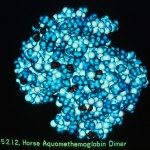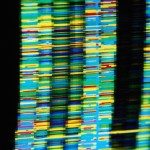Lien vers Pubmed [PMID] – 15105826
EMBO Rep. 2004 May;5(5):490-6
Histone H3 lysine 9 methylation is associated with long-term transcriptional repression through recruitment of heterochromatin protein 1 (HP1) proteins. These proteins are believed to promote the formation of dense chromatin structures interfering with DNA accessibility. During the G2 phase of the cell cycle, HP1 proteins are delocalized from foci of pericentromeric heterochromatin, while a wave of H3 serine 10 phosphorylation is initiated within these regions. Here, we show that in vivo phosphorylation of serine 10 in G2 can occur on histone tails methylated on lysine 9. Unexpectedly, this modification favours rather than prevents HP1 binding to chromatin. Dissociation of HP1 from the methylated histone H3 tails is observed only after a third modification by acetylation of lysine 14, which occurs in prophase. We propose that phosphoacetylation of histone H3 could be a general mechanism allowing the cell to overcome HP1-mediated transcriptional repression.




